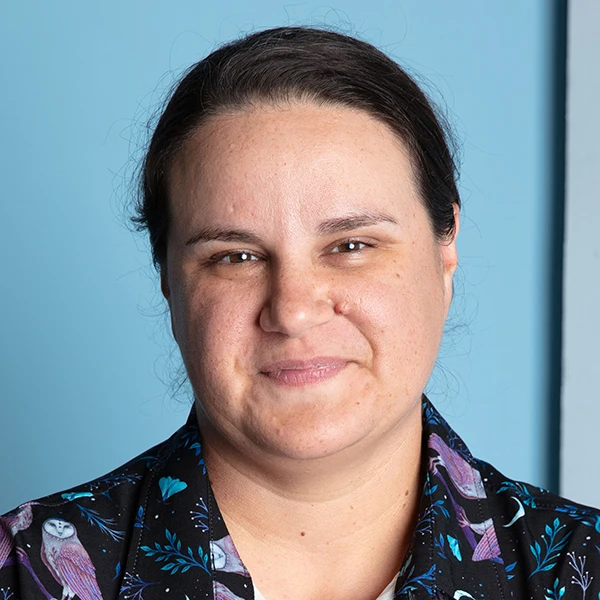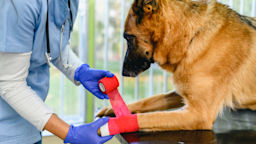Key takeaways:
For dogs, injuries to the cranial cruciate ligament (CCL) — a ligament that helps hold the knee together — are common.
Tibial plateau leveling osteotomy (TPLO) surgery corrects the injury and has a high success rate of restoring function to the knee.
Dogs usually make a full recovery about 6 months after TPLO surgery.
A torn cranial cruciate ligament (CCL) is a common knee injury for dogs — similar to anterior cruciate ligament (ACL) injuries for humans.
A dog’s CCL helps connect the shin bone and thigh bone to the knee. If the CCL tears, it prevents a dog from being able to walk properly. This can be painful and negatively impact their well-being if left untreated.
If your pup has this kind of injury, a decision for treatment needs to be made quickly. Tibial plateau leveling osteotomy (TPLO) surgery is the procedure that fixes a torn CCL, and it has a very high success rate.
Search and compare options
Does your dog really need TPLO surgery?
If your veterinarian recommends TPLO surgery after a torn CCL diagnosis, then yes, your dog likely needs the procedure.
CCL tears in dogs usually occur because of a gradual weakening of the knee from age. But they can also be sudden injuries. When a tear happens, a dog can’t walk on their injured leg.
If the injury isn’t corrected, the bones will become damaged and arthritis will set in. This causes chronic pain and greatly impacts a dog’s mobility. Without treatment, they might adapt to the injury. But it doesn’t mean their injured knee is healthy or that they’re no longer in pain.
It’s also important to consider that your dog might have already had arthritis before the injury. The damage from the torn CCL could worsen their condition.
Some dogs, usually smaller breeds, can recover on their own, but others need surgery to correct the injury. Large breeds of dog usually benefit from surgery the most.
Whether it’s for a younger or an older dog, correcting the injury with surgery is the best way to:
Improve their mobility
Lower their pain
Decrease the development of more arthritis
Read more like this
Explore these related articles, suggested for readers like you.
What happens during TPLO surgery?
Before TPLO surgery, your vet will place your dog under anesthesia so that they are asleep during the procedure. Then, the vet will work to correct the CCL injury.
A dog’s shin bone is sloped where it meets the thigh bone at the knee. If there isn’t a CCL to connect the bones to the knee, the shin bone will slide forward along the slope. TPLO surgery corrects the slope and the sliding.
First, the vet will remove the torn CCL and examine the cartilage between the bones for additional damage. If there’s a tear in the cartilage, they could decide to repair it, remove only the damaged part, or remove the whole thing.
To correct the slope, the top of the shin bone is rotated until the slope is level. Then a metal plate is attached using several screws to hold the bone together so it can heal.
Once your vet finishes the surgery, your dog will be allowed to rest and recover from the anesthesia. They’ll typically stay at the hospital or clinic until the day after surgery. Then, your vet will go over what to expect for your dog’s recovery and future.
How do you care for your dog during their recovery?
Caring for your pup after surgery is just as important as correcting the injury. It will take time for them to heal.
There are four important things you can do to help your dog’s recovery process. They are:
Restrict activity. Unrestrained activity can lead to injuries that might prolong the recovery process and even require more surgery to fix. For 4 months after the surgery, don’t let your dog run, jump, play roughly, or climb stairs. Use a crate or indoor fence to help keep activity levels low. And take them outside on a leash for potty breaks, even in the backyard.
Keep them from licking or chewing their incision. The incision from your dog’s surgery needs to be kept clean. If they lick or chew on their incision, it could cause infection. To prevent this, your dog should wear an Elizabethan collar (cone) for 2 weeks after the surgery, until the incision is healed.
Use ice packs. During the first 2 to 3 days following surgery, apply an ice pack to your dog’s incision as instructed by your veterinarian. This will help reduce inflammation and swelling. Be sure to use a barrier between your dog’s skin and the ice, such as a towel.
Do rehabilitation. After surgery, you’ll want to do range-of-motion exercises with your dog, using the leg that was operated on. You don’t have to go to a specialist for this. Most of the time, the instructions are included on your dog’s discharge notes. Your vet can also guide you if you’re not sure.
It can take about 8 weeks for the bone to recover. And a full recovery can take up to 6 months. If there are any complications — such as reinjury or infection — this process can take longer.
Be sure to stay in contact with your veterinarian. They will be able to determine how well your pup recovers and when all restrictions can be lifted. The recovery process typically follows the timeline in the below chart.
| Timeframe | What to expect from the recovery |
|---|---|
| Week 1 | Within this week, your dog could start putting weight on their leg again. |
| Week 2 | Your dog should be able to bear a good amount of weight as they walk. |
| Weeks 3-8 | The incision should be healed. Limping is usually greatly decreased, but all activity should still be restricted. Your veterinarian will likely want to do new X-rays around 8 weeks. This will show them how well the bone is healing. |
| 2 months | Leash walking exercise can be gradually increased each week. |
| 4 months | Most exercise restrictions can stop. |
| 5 months | Normal activity can usually resume. |
How do you know if your dog has reinjured itself?
If your recovering dog suddenly doesn’t want to put weight on their leg, contact your veterinarian. Injuries can happen during recovery. The tendons around the knee can be sprained with uncontrolled activity, even up to 5 months after surgery.
Sometimes, other things indicate a potential injury, such as a popping or clicking noise when your dog walks. Consult your veterinarian if this happens. They’ll be able to determine if the knee was reinjured or not. If it wasn’t reinjured, the clicking sound could eventually go away.
Failure of the metal plate or screws used during TPLO surgery is rare. But it can happen, especially if a dog’s activity isn’t restricted. If this occurs, surgery might be needed to fix it.
How much does TPLO surgery cost for dogs?
The cost for TPLO surgery can add up to between $3,500 and $5,000. But it could also cost as low as $2,000, depending on your dog, where you live, and where you go for the surgery. TPLO surgery costs more than other procedures because of the specialized equipment and the required training.
When considering the price tag of TPLO surgery, don’t forget to factor in the costs before and after the surgery. On top of the procedure itself, X-rays are needed before and after the surgery, along with follow-up vet visits. Ask your veterinarian for a full list of costs.
The bottom line
If your veterinarian recommends tibial plateau leveling osteotomy (TPLO) surgery for your dog’s torn cranial cruciate ligament (CCL), it’s most likely necessary.
TPLO surgery restores function to a dog’s knee by leveling the slope of the shin bone. If there aren’t any complications, the bone typically heals in about 8 weeks. A full recovery usually takes up to 6 months. Be sure to restrict your pup’s activity, keep their incision clean, and help their mobility with gentle exercises.
TPLO surgery is more costly than other surgeries. But it’s usually a very successful procedure.

Why trust our experts?



References
Animal Surgical Center of Michigan. (n.d.). Tibial plateau leveling osteotomy - TPLO.
Brooks, W. (2021). Ruptured cranial cruciate ligaments in dogs. Veterinary Partner.
CareCredit. (2021). Cat and dog ACL(CCL) surgery cost and financing.
Cornell University Veterinary Specialists. (n.d.). Tibial plateau leveling osteotomy (TPLO).
Harasen, G. (2014). TPLO (tibial plateau leveling osteotomy) in dogs. Veterinary Partner.
Khuly, P. (n.d.). Cruciate ligament injury in dogs. Embrace Pet Insurance.
Nanda, A., et al. (2019). Tibial plateau leveling osteotomy for cranial cruciate ligament rupture in canines: Patient selection and reported outcomes. Veterinary Medicine: Research and Reports.
Oakland Veterinary Referral Specialists. (2019). The dog owner’s guide to TPLO surgery.
TPLO Info. (n.d.). TPLO recovery FAQs.
















